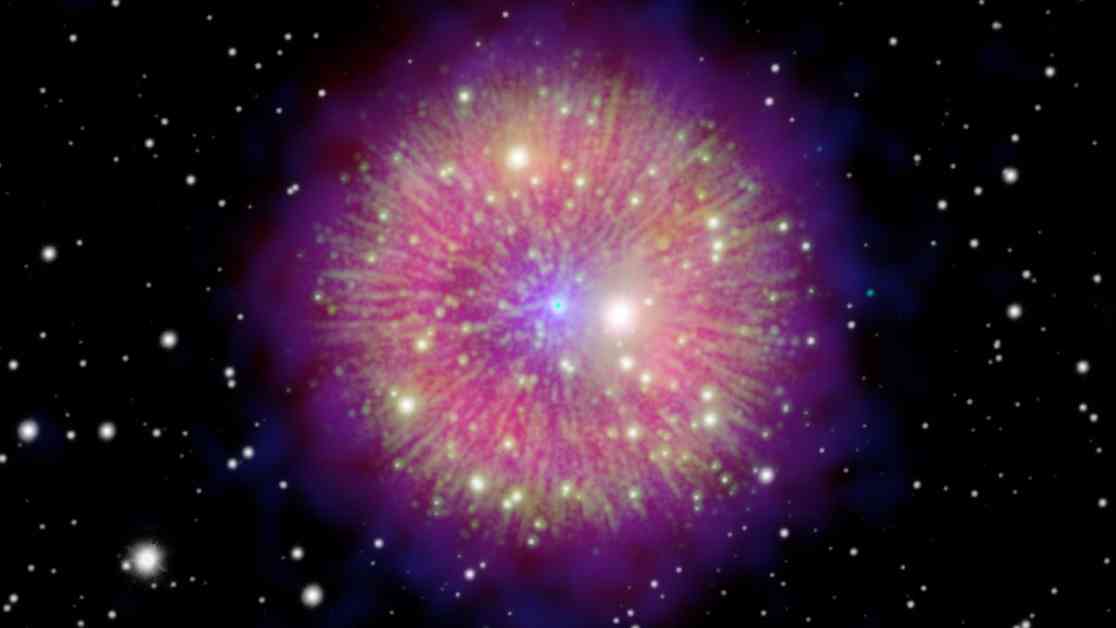A groundbreaking animated map has recently uncovered intriguing details about a mysterious “zombie star” hiding within the remnants of a supernova that illuminated Earth’s sky over 800 years ago. This unique 3D visualization reveals that the aftermath of the stellar explosion is peculiarly asymmetrical and is still expanding steadily.
Back in 1181, astronomers in China and Japan observed a bright new star near the Cassiopeia constellation, which persisted for about six months, from August 1181 to February 1182. Historical records refer to this celestial phenomenon as a “guest star,” but it was later identified as a powerful supernova called SN 1181. It wasn’t until 2021 that scientists confirmed the supernova’s origin in the nebula Pa 30, a massive gas cloud larger than our solar system.
Previous studies of Pa 30 had unveiled a white dwarf star at its core, the only remnant of the star that exploded and shone brightly 843 years ago. This white dwarf burns fiercely at a scorching temperature of approximately 360,000 degrees Fahrenheit (200,000 degrees Celsius), ranking it among the hottest stars known to us. Typically, stars torn apart by supernovas are completely disintegrated, making this type of remnant exceptionally rare.
The new map of Pa 30 illustrates long, petal-like filaments extending outward from the zombie star as matter continues to explode from the remnant. This detailed image was produced using the Keck Cosmic Web Imager (KCWI), a spectrograph located near Hawaii’s Mauna Kea volcano. The intricate map captured large filaments resembling dandelion petals stretching from the white dwarf to the nebula’s edge, providing valuable insights into the nebula’s structure and evolution.
By analyzing the spectral shifts in light emitted by Pa 30 over time, the researchers were able to track the nebula’s changing shape and create a simulated 3D movie of its history. This groundbreaking approach has never been applied to a supernova remnant before, marking a significant scientific achievement.
The animation revealed that Pa 30 is expanding at a remarkable speed of around 2.2 million mph (3.5 million km/h), consistent with the initial velocity of debris ejected during the supernova explosion. This suggests that the ejected material has maintained its speed since the explosion, offering crucial insights into the event.
The researchers were able to pinpoint the supernova explosion to the year 1181 with remarkable precision, confirming that the guest star observed by ancient astronomers originated from Pa 30. However, the nebula’s unusual asymmetry remains a mystery, challenging scientists to unravel the underlying causes behind its peculiar shape.
This new map not only sheds light on a unique cosmic event witnessed by our ancestors centuries ago but also poses new questions and research challenges for astronomers to explore further. The study’s findings open up exciting possibilities for unraveling the mysteries of supernovas and their aftermaths, offering a glimpse into the dynamic and fascinating universe that surrounds us.










